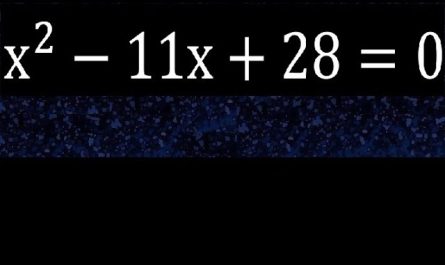Technical analysis can be a helpful technique to add to your trading toolkit if you are a trader wanting to improve your trading skills. It can assist you in making informed trading decisions by evaluating charts, indicators, and patterns.
In this post, we will go over the fundamentals of technical analysis in layman’s words. We’ll show how it may be utilized to forecast future market changes. Understanding technical analysis may help you take your trading to the next level. So let’s get started and learn more about this strong tool!
What Is Technical Analysis?
Technical analysis is a method of valuing assets. It involves studying market activity indicators such as past prices and volume. Traders use this investment analysis to identify trends and patterns in market behavior. They also use this to estimate future price movements.
Technical analysis is based on the concept that previous price action can predict future price behavior. At the same time, fundamental analysis focuses on a company’s financial health and economic conditions.
Also, traders can gain market insights and make informed trading strategies. They can use tools such as charts and indicators.
The Basics of Technical Analysis
Technical analysis is a wide field that includes numerous tools and methodologies. Technical analysis is fundamentally the practice of analyzing stocks based on price and volume data. Traders utilize this to discover market trends, patterns, and support and resistance levels. This allows them to make more informed trading decisions.
The concept of price action is an important concept in technical analysis. The movement of a security’s price over time is referred to as price action. It serves as the foundation for many technical analysis tools and procedures. Price charts are used by technical analysts to track the price action of a security and detect market trends and patterns.
In addition to price charts, technical analysts utilize a variety of technical indicators. These help them understand the market. These indicators are mathematical calculations based on price and volume data. They can assist traders in spotting overbought and oversold positions, as well as probable trend reversals.
Common Technical Indicators
There are numerous technical indicators accessible. So, traders can select the ones that suit their trading style best. The following are some of the most widely utilized technical indicators:
Moving Averages
Moving averages are one of the most utilized technical indicators in investment analysis. A moving average is essentially an average of a security’s price over a set period of time, such as 10, 20, or 50 days.
Traders employ moving averages to smooth out short-term price swings and discover market patterns. There are several distinct forms of moving averages. This includes simple moving averages (SMAs) and exponential moving averages (EMAs). Each has its own set of advantages and disadvantages.
Relative Strength Index (RSI)
The Relative Strength Index (RSI) is another common technical indicator used in technical analysis. The RSI is a momentum oscillator that assesses the strength and speed with which a security’s price moves.
Traders use the RSI to identify overbought and oversold market circumstances. This helps them make better trading decisions. The RSI is derived using a formula that compares the average gains and losses of a security over a specific time period.
Bollinger Bands
Bollinger Bands are a sort of technical indicator that consists of three lines displayed on a price chart. The center line indicates the security’s moving average. Meanwhile, the upper and lower lines represent the standard deviation of the price from the moving average.
Bollinger Bands identify market volatility and potential trend reversals. When the bands constrict, it can imply minimal volatility. Whereas, a widening of the bands can indicate more volatility.
Fibonacci Retracements
Fibonacci retracements are a common technical analysis method. They can identify probable levels of support and resistance in a market. This method is based on the idea that markets retrace a predictable portion of a move before resuming the trend.
The vertical distance between two price points on a chart is divided by the essential Fibonacci ratios. These compute Fibonacci retracements. These ratios are based on the Fibonacci sequence, which is a set of integers where each number is the sum of the two numbers before it.
Using Technical Analysis in Trading
Technical analysis is a strong tool that can assist traders. They can make better decisions by recognizing trends and critical levels of support and resistance in the market. However, it is crucial to note that technical analysis is one weapon in a trader’s inventory. Utilize it in conjunction with other analysis and risk management tactics.
In trading, it is critical to first determine your objectives and trading style. Are you a short-term trader searching for quick profits? Or are you a long-term investor aiming to establish a diversified portfolio? After you’ve determined your objectives, you may begin analyzing charts. Find critical levels of support and resistance using technical indicators.
It is also vital to realize that technical analysis is not perfect and should not be depended on solely. The market can be unpredictable, and unexpected developments might have an impact on price changes. As a result, it is critical to use technical analysis in conjunction with fundamental analysis.
You might be interested in integrating technical analysis into your trading strategy. RoboMarkets has a variety of materials and tools to get you started. You can access a number of technical indicators and charting tools. They also offer training resources and webinars. This will help you strengthen your analytical skills and stay current with market movements.
Maximizing Trading Success With Technical Analysis
Technical analysis is a valuable tool that traders can utilize to make informed trading decisions.
Traders can control risk and discover probable entry and exit points. They can evaluate charts, indicators, and patterns. Technical analysis is not perfect. But it can provide useful insights into the market and help traders improve their trading skills.
So, whether you’re a newbie or an experienced trader, understanding technical analysis can help you become a more effective trader. Begin exploring the realm of technical analysis today. See how it can help you reach your trading objectives.
Visit our page today to learn more!

